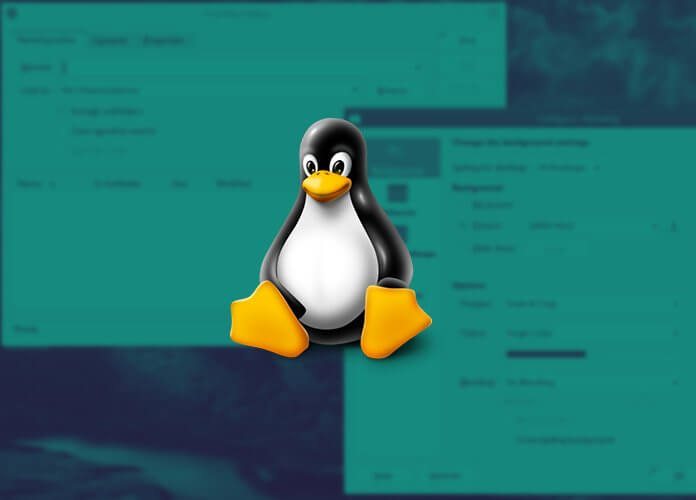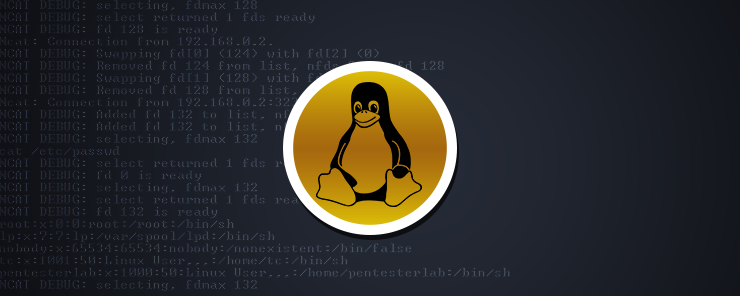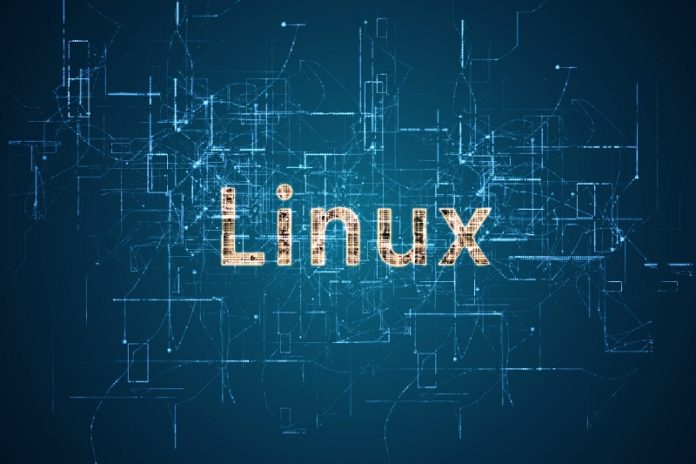Our tale begins two decades ago, there was a 20-year-old computer geek just like one of you, sitting behind his computer screen, day and night, weaving stories of code. He had taken up Computer Science in college for all the right reasons. On the night of August 25, 1991, our guy whose name was Linus Torvalds was sitting on his computer in Helsinki posting about this experimental project he was trying his hand at. Here’s exactly what the post was:
“Hello everybody out there using Minix-
I’m doing a (free) operating system (just a hobby, won’t be big and professional like gnu) for 386 (486) AT clones. This has been brewing since April and is starting to get ready. I’d like any feedback on things people like/dislike about Minix, as my OS resembles it somewhat (same physical layout of the file system (due to practical reasons) among other things.)
I’ve currently ported bash (1.08) and gcc(1.40), and things seem to work. This implies that I’ll get something practical within a few months, and I’d like to know what features most people would want. Any suggestions are welcome but I won’t promise I’ll implement them. 🙂
PS. Yes- it’s free of any Minix code, and it has multi-threaded fs. It is NOT portable (uses 386 task switching etc), and it probably never will support anything other than AT-harddisks as that’s all I have :-(.”
A quick side note on Minix: It was an operating system developed predominantly by Andrew Tanenbaum who is an esteemed professor in the computer science field. He meant to create Minix as a learning OS similar to UNIX.
Linux used to be called FREAX in its early days. It was a portmanteau of Free, freak, and X. The license of agreement was pretty simple for Linux back then, Linus just wanted the full source to be available for free everywhere, copyright notices to be intact, and nobody was supposed to distribute this for any kind of fee.
Everything was going great. He had invited all his fellow coders to give in suggestions, he used to update everyone about the progress of this operator. The program so far was simple and was work in progress. Then, a few months passed, and spring came by, Orest Zborowski implemented the first socket layer on Linux. This was quite an important step in the Linux journey. Until now there were no UNIX domain sockets which meant nobody could have x server or x windows, which essentially meant, no GUI. It was the first-ever networking socket layer for Linux. Linux wouldn’t be where it is today if it did not have GUI, so Orest was definitely a key contributor.

Flash forward to January 13, 1992. Linus released Linux 0.2. One major change here was that the OS was now officially GPL. In this version, Linux also changed the rights, the clause where one couldn’t distribute it for money was reversed. Here’s what Linus wrote whilst announcing this:
“The Linux copyright will change: I’ve had a couple of requests to make it compatible with the GNU copyleft, removing the ‘you may not distribute it for money’ condition. I agree. I propose that the copyright be changed so that it confirms to GNU- pending approval of the persons who helped write code. I assume this is going to be no problem for anybody: If you have grievances (‘I wrote that code assuming the copyright would stay the same’) mail me. Otherwise, the GNU copyleft takes effect as of the first of February. If you do not know the gist of the GNU copyright- read it.”
I like how Linus, wanted to check with all his contributors before making this change, it just goes to show how humble his personality was. A month after he released another version the 0.12. It brought many new features, my favorite being, ‘Linux now prints cute dots when loading’ haha. In Linus’s own words:
“WoW! Run, don’t walk to see this :). Seriously, it should hopefully now load even on machines that never got off the ground before, but otherwise, the loading hasn’t changed. Implemented by Drew.”
Read More: Linux and its Unique Features!
So shoutout to Drew there because of who, Linux took a new step towards flexibility and well, also for the cute dots. This version also brought along some more features like Virtual Memory and Symbolic links. In addition to the ‘mkfs’ program, there was now a ‘mkswap’ program on the root disk. Swapping could be enabled by changing the word at offset 506 in the boot image to the desired device. One could use the same program as for setting the root file system. I mean, do you even remember a time when Linux was used without Virtual memory and symbolic links! While talking about the changes Linus also mentioned in the post:
“NOTE! This has been tested by Robert Blum, who has a 2M machine, and it allows you to run gcc without much memory. HOWEVER, I had to stop using it, as my diskspace was eaten up by the beta-gcc-2.0, so I’d like to hear that it still works: I’ve been totally unable to make a swap-partition for even rudimentary testing since about Christmas time. Thus the new changes could possibly just have backfired on the VM, but I doubt it.”
This side note by Linus just goes to show how far we have come. In the early days when these guys were implementing VM into Linux, they were working with machines with just a couple megabytes of RAM at the most, and they couldn’t really build their features cause they didn’t have enough memory to do so. And yet they managed to pull it off just the same. And here we are in 2019 where only web browsing takes around 4GB of RAM!
 In 1992 we saw an actual Linux distribution for the first time. The first distribution ever was in most people’s opinion the H. J. Lu’s “Boot-Root.” It was literally a boot disk and a root disk that was distributed on two 5 inch floppy disks by H. J Lu. So as the name goes, you put on the boot disk and then when you’re prompted to you pull out the boot disk and stick it in your root disk. And boom! In about ten minutes you shall get root! Can you imagine now waiting for that long to get to root? In all, it came down to these two disks, and they came with nothing. All they had the capability of was of copying more files on and building stuff. That’s it. After this, there were a lot of newsgroups coming up with information and technique of building applications onto BootRoot.
In 1992 we saw an actual Linux distribution for the first time. The first distribution ever was in most people’s opinion the H. J. Lu’s “Boot-Root.” It was literally a boot disk and a root disk that was distributed on two 5 inch floppy disks by H. J Lu. So as the name goes, you put on the boot disk and then when you’re prompted to you pull out the boot disk and stick it in your root disk. And boom! In about ten minutes you shall get root! Can you imagine now waiting for that long to get to root? In all, it came down to these two disks, and they came with nothing. All they had the capability of was of copying more files on and building stuff. That’s it. After this, there were a lot of newsgroups coming up with information and technique of building applications onto BootRoot.
Read More: Learn Linux OS Basic Commands From Scratch
On January 29, 1992, there was a small hiccup. Andrew S Tanenbaum posted this to comp OS Minix.
“Linux is obsolete.
Minix is a microkernel-based system. The file system and memory management are separate processes, running outside the kernel. The I/O drivers are also separate processes (in the kernel but only because the brain-dead nature of the Intel CPUs makes that difficult to do otherwise). LINUX is a monolithic style system. This is a giant step back into the 1970s. That is like taking an existing, working C program and rewriting it in BASIC. To me, writing a monolithic system in 1991 is a truly poor idea. Just for the record, as of about 1 year ago, there were two versions (of MINIX) one for PC (360K diskettes) and one for the 286/386 (1.2M). The PC version was outselling the 286/386 version by 2 to 1. I don’t have figures, but my guess is that the fraction of the 60 million existing PCs that are 386/486 machines as opposed to 8088/286/680×0, etc is small. Among students, it is even smaller. Making software free, but only for folks with enough money to buy first-class hardware is an interesting concept.
Of course, 5 years from now that will be different, but 5 years from now everyone will be running free GNU on their 200 MIPS, 64M SPARCstation-5.”
It was basically a post by Andrew throwing shade at Linus, and criticizing Linux by its design, usability, etc. We all knew how right his prediction turned out to be. This wasn’t a milestone at all just a small tidbit. Moving on.
In February 1992, the first Real Linux Distro was announced and it was called the MCC Interim Linux, where MCC stands for Manchester Computing Centre. It was the first distro that shipped something more than a boot disk and a root disk. This had a lot of utilities on there and most of the software which had been compiled up till that point. Things started happening pretty rapidly from here on. On May 21, 1992 SLS (Softlanding Linux System) came into picture which had quite an amusing tagline: “Gentle Touchdowns for DOS bailouts.” SLS is often confused as the first-ever Linux distro, but in reality, it was definitely the MCC.
Very shortly thereafter, on December 8, 1992, “Yggdrasil” came into picture which was the first Linux distribution that shipped with X Windows pre-configured. So all one had to do then was boot your system and type start X and there you get your GUI. (It still took ten minutes but things did get much easier.) This distribution was shipped on 24 x 3.2” floppies. And at the time, your software was considered pretty lit, if it shipped on 24 floppies. This was also a bit step up cause it was the first distro to be supported by a company that helped build, package and sell it.
Moving on to July 17, 1993, when Slackware 1.0 was launched. Slackware was the first Linux distro that had to stay in power. It was shipped on 24 3.5″ floppies. And back then it was a pretty cool thing to have. Shortly after, on September 15, 1993, Debian 0.01 came along. 26 years later, both these names are still widely used in the tech market.
On March 14, 1994, we finally had Linux Kernel 1.0! Big news, it was pretty buggy but it existed! Things really ramped up from here. In the same month, S.u.S.E was formed. (version ‘3/94) and it’s the first version was very similar to Slackware.
On August 15, 1994, things got a little rocky for our lead character of the story, Linus. A villain entered by the name of Willian R. Della Croce, Jr. So basically he swoops in and decides to trademark the word “Linux” and then he went around demanding every company that used Linux in their name or ship Linux, to pay him 10% royalties on whatever they earned. This was a big concern at that point cause nobody had the money to fight this. In around 1998, this issue was somehow settled.

On November 3, 1994, Red Hat Commercial Linux came about. Again, Redhat & SUSE both these companies still exist. In 1999 Red Hat stocks tripled as it went on to become the first Linux company to go public. That same year IBM spent a billion dollars to improve and advertise Linux. Soon Linux was knocking out the industry heavyweights and fueling the rise of the internet with its free software in short Linux revolutionized computing.
Read More: Introduction to Red Hat Linux Administration
In 1996 Torvalds announced the official mascot of Linux which is a penguin. As a child, Linus was bitten by a baby Penguin at his visit to the zoo and that was his motivation behind the mascot.
By 2011, Linux was running on 75% of stock exchanges worldwide and powering the servers that deliver Amazon, Facebook, Twitter, eBay and Google. In the same year, Linux Kernel 3.0 was released. In 2015, version 4.0 was released, and just this year (2019) version 5.0 has been released which has a lot of new features such as AMD FreeSync display support, Raspberry Pi touchscreen support, Btrfs swap file support and Adiantum data encryption.
Read More: Best C/C++ IDEs & Editors To Consider For Linux!
And here we are today where Linux is everywhere. We use Linux literally every time we surf the web. Half of every company has an Enterprise Linux Distribution. There are a billion distributions of Linus for consumer desktops. And all these have things like live CDs and USB boots and all these fancy things. And it gets easy to forget that we came from Dennis Ritchie and Ken Thompson just wanting to play a game which essentially wasn’t even a video game but they didn’t like any of the software. It just came from a bored Ken at work, quitting his boring job to make software.
If one sits down to research the complete story and history of Linux, it can be turned into a fat novel. But I wanted to mention all these major milestones that we had and that we often take for granted. And the fact that all these companies still exist is pretty phenomenal cause usually tech companies don’t last that long. I hope you enjoyed this brief history, now let’s back on our Linux systems and create some magic.
Read More: Linux Interview Questions And Answers
Other Similar Stories
- Why is Python Programming Language So Popular Among Programmers?
- JavaScript Programming Language: Technologies’ Very Own Mt Everest
- IBM: The Epic Saga of Computer Industries
- Huawei Controversy: The Story Behind the Infamous Ban
- Google’s March 2019 Core Update: What Exactly Went Down?









